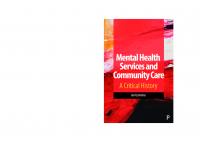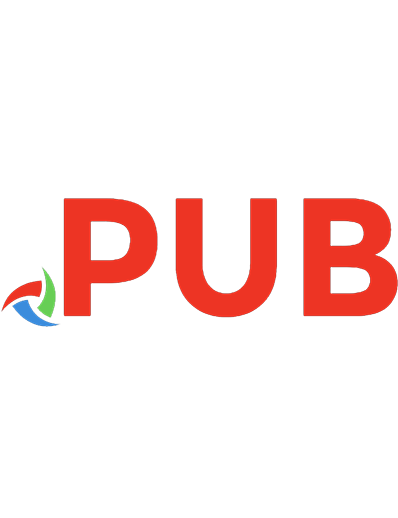Mental and Elemental Nutrients: A Physician's Guide to Nutrition and Health Care 0879831146
A pioneer in the field of biological psychiatry details the functions of essential nutrients, warns of the dangers of fo
1,183 107 71MB
English Pages [548] Year 1976
Polecaj historie
Citation preview
A Physician s Guide to Nutrition
Carl C. Pfeif fer,
PhD., m.d.
and the Publications Committee of the Drain Dio Center A Ore
and Health Care
$10.95
MENTAL AND ELEMENTAL NUTRIENTS
A Physician's Guide to Nutrition and Health Care Carl C. Pfeiffer, Ph.D., M.D. and the Publications Committee of the Brain Bio Center Schizophrenics returned to normal func-
tioning— hyperactivity and mental disabilities in
children alleviated— the effects of
aging reversed— psychoses reduced— these results
have been achieved, and observed,
by Dr. Carl C. Pfeiffer and his staff-not by drugs and the conventional psychotherapy, but by restoring their patients' nutritional balances.
Dr. Pfeiffer's research, practice and entire
experience as Director of Princeton's
Brain Bio Center have made inescapably clear the fact that
many mental
conditions
derive from bodily malfunctions— specifically
from the absence of
in the
The cause
body.
an abnormal inability
to
vital nutrients
of this
poisoning from pollutants,
or simply adherence to our
pre-packaged
snacks
an
keep a normal blood-sugar
level, outright
of
may be
loss of a trace mineral,
dishes,
and processed
modern
diet
empty-calorie
and adulterated
foodstuffs.
In Mental and Elemental Nutrients, Dr. Pfeiffer discusses the role and func-
known nutrients, from the proand vitamins with which most readers be familiar, to the place and impor-
tion of all tein will
tance of the little-known trace minerals
which can make the difference between sickness and health, often between life and death, or sanity and mental illness. (continued on back flap)
y-
MENTAL
AND
A Physician's Guide to Nutrition
and Health Care
ELEMENTAL NUTRIENTS
The Publications Committee
of the
Brain Bio Center, Princeton,
New
Jersey
CARL C. PFEIFFER, Ph.D., M.D., Chairman Elizabeth H. Jenney, M.S.
Rosalind LaRoche, B.A.
Susan Glantz, B.S. FredEarle,B.S.
Mary Alice Kruesi, Donna Bacchi Dehhy Cooper Ann Spane/, B.A.
B.A.
MENTAL
AND
A Physician s Guide to Nutrition
and Health Core
ELEMENTAL NUTRIENTS CarlGPfeiffer,
Ph.D.,M.D.
and the Publications Committee of the Drain Dio Center
A Drain Dio Dook
KEATS PUBLISHING,
INC.
\
New
Canaan, Connecticut
Mental and Elemental Nutrients Copyright © 1975 by Carl C. Pfeiffer, Ph.D., M.D. All Rights Reserved Library of Congress Catalog Card
Number 75-19543
ISBN: 0-87983-114-6 PRINTED IN THE UNITED STATES OF AMERICA Keats Publishing,
Inc., 36
Grove Street,
New Canaan,
Connecticut 06840
Contents Humphry Osmond, M.D. Commentary Abram Hoffer, M.D.
Preface
Introduction
xiii
xvii
One
Part
ix
Nutritional Background Medicine
1 Nutrition as Preventive
3
2 Nutrients Versus Drugs for the Good Life 3
We
Shall
Overcome— Inadequate
14
20
Diet!
4 Those Publicized Weight-reducing Regimes 5 Eat to
Live— Don't Live
to Eat
2
50
55
6 Cholesterol, Sugar, Fats and the Frequently Maligned Egg 7 Artificial Sweeteners
8 Vegetarianism:
Part
Its
Two
9 Niacin and
88
Advantages and Shortcomings
99
The Vitamins 116
Mega vitamin Therapy
117
10 The Sleep Vitamins: Vitamin C, Inositol, and Vitamin B-6 11 B-12 and Folic Acid
155
12 The Remainder of the B-Complex Vitamins
13 Rutin and Bioflavonoids
14 Deanol:
A Biochemical
Stimulant
187
16 Zinc as an Essential Element
247
18 Manganese
253
K
190
Essential Trace Elements
New Vistas 17 Iron
172
185
15 The Fat-soluble Vitamins: A, D, E and
Part Three
71
215
212
Open
125
19 Sulfur: The Forgotten Essential Element
20 Selenium: Stepchild of Sulfur
266
21 Calcium and Demineralization
22 Magnesium 23 Potassium
270
277
280
24 Molybdenum
282
25 Vanadium: Little-known Element
26 Chromium 27 Tin
259
286
289
294
28 Cobalt
296
29 Fluoride
298
30 Nickel: an Essential Trace Metal but Where? 31
Aluminum
304
Part Four 32 Lead, Mercury and
Toxic Effects of Heavy Metals Cadmium
325
34 Bismuth: The Fifth (Column) Heavy Metal
Part Five
Human
36 The Air
We
Clinical
Brain: Three
Breathe
341
Problems
Pounds
348
of Delicate
367
38 Alcoholism: The Major Drug Addiction
Low
371
Blood Sugar
380
40 The Schizophrenias— At Least Three Types A. Mauve-factor Patients
408
415
41 Insomnia: To Sleep, Perchance to
42 Headache
Dream
422
432
43 Aging and Senility
396
402
B. Childhood Behavioral Disorders
C. Cerebral Allergy
Hardware
359
37 Milk Problems: Lactose and Lactase
39 The Hypoglycemias:
443
44 Arthritis and Joint Disorders
452
45 Skin Problems in Patients of All Ages
46 Nutrients for a Better Sex Life 47 Side Effects of Hormones
310
311
33 Copper: The Fourth Heavy-Metal Intoxicant
35 The
301
469
473 vi
459
349
48 The Contraceptive It
Pill:
The Mental and Metabolic Havoc
478
Evokes
49 Hexachlorophene Poisoning
485 Conclusion,
493
General References,
496
Books for Further Reading, 499
Index,
List of
Tables
TABLE
1.1
Basic Causes of Malnutrition
TABLE
2.1
The "Good Life" Has Various Facets
TABLE
2.2
Progress in the Science of Typology According to
Disciplines
TABLE
5.1
4 15
18
Analysis by Atomic Absorption Spectograph of Trace
Elements in Honey and Molasses
60
TABLE
10.1
Outline of Possible Biochemical Stimulants
TABLE
10.2
Drug Actions Measurable
in
Man by Means of the
Quantitative Electroencephalogram
TABLE
10.3
Effect of Large
140
141
Doses of the Water-soluble Vitamins
in the Quantitative
Electroencephalogram of Normal
Human
142
Subjects
TABLE
10.4
Presence of Inositol
TABLE
10.5
Inositol
TABLE
10.6
Levels of Vitamin B-6 in the Blood of Pregnant and
Non-Pregnant
in
Some Animals
Content of Various Biological Materials
Women
16.1
Clinical Disorders
TABLE
16.2
Dietary Supplements of Zinc,
TABLE
16.3
and Possible Zinc Deficiency
239
Food Sources
147
152
TABLE
Manganese
144
of Zinc
241
vii
Magnesium and
228
.
496
TABLE
18.1
Selected Foodstuffs with Appreciable Amounts of
Manganese
256
TABLE
24.1
Food Sources of Molybdenum
TABLE
32.1
Hazardous Environmental Heavy Metals
TABLE
33.1
Typical Copper Content of
TABLE
33.2
Copper Content of Some Drinking Waters
Eastern United States
TABLE
33.3
33.4 of
323
Home Waters
329 in the
331
"Dementia Dialytica": Clinical Mystery or Diagnostic
Dichotomy?
TABLE
284
334
Selected Foodstuffs with Appreciable Amounts
Copper
338
TABLE
39.1
Classification of
TABLE
39.2
Comparison of Spermine and Histamine Levels
TABLE
39.3
Foods for Hypoglycemic Patients
Hypoglycemias
382
392
393
TABLE 40.1
Comparison
TABLE
Comparative Symptoms of Pyroluria in Emily Dickinson
40.2
of Blood Histamine Levels
and Charles Darwin
TABLE
40.3
397
405
Drug- and Vitamin-induced Changes in the Behavior of
Autistic, Schizophrenic
and Hyperactive Children
414
TABLE 40.4
Parent Evaluation of Drug Effects in Young Patients
TABLE
Presenile and Senile
43.1
Dementia— Spermine Levels
List of Figures
FIGURE
6.1
FIGURE
16.1
Types of White Spots on Fingernails
FIGURE
39.1
Glucose Tolerance Curve
389
FIGURE
39.2
Glucose Tolerance Curve
389
FIGURE
40.1
Symptoms: Three Types of Schizophrenia
400
FIGURE
40.2
The Schizophrenias
American Dietary
401
The Biosynthesis
of Cholesterol
'75:
vili
73 J35
414
448
Preface and a privilege to welcome this sensible and much needed book, which draws together a great deal of information of value to the mentally ill and their families for planning appropriate nutrition. Yet this book should be equally use-
It is a pleasure
ful to all of us.
was self-evident to the older psychiatrists that a good was essential for their patients. Not only because of the It
diet
nutrients
was seen
which they ingested with
their food, but
because food
in the hospitals of the mid-nineteenth century as be-
ing a focus for the exercise of good behavior. To further this, the director of the hospital frequently sat down with his patients
and
him an excellent opportunity to ensure that the hospital cooks were providing nutritious and tasty fare, while also allowing him to engage in conversation with patients and to observe their table manners. The gigantification of the mental hospital made it impossible for the superintendent to do this. With that gigantification the quality of the food dropped so much that it would have required a cast-iron stomach and fortitude perhaps beyond the limit of human endurance for the superintendent to ate with them, family style. This gave
eat frequently with the patients. This omission tended to divert
from the importance of eating for paboth as a nutritional and a social exercise. I was walking through a mental hospital dining room the other day and was struck by its noisiness, smelliness and general bleakness. I am not sure how nutritionally sound the food was, but it was certainly not so inviting that I longed to seize a tray and join in the repast. Yet from almost a century before, we have descriptions of the excellent food in that same hospital, dainty ways in which it was served, the clean white napery, fine chinaware and glistening crystal. Food should not only be good, but it should be seen to be good and it should be served in a manner appropriate to its goodness. Unluckily, those with grave mental illnesses are unlikely to be particularly well-fed in hospitals. In part at least because
psychiatrists' attention tients,
the hospital authorities often have the crudest ideas as to what
ix
the patients' requirements might be both nutritionally and psychosocially.
The
own
psychiatric hospitals, instead of sticking to their
have tended to become more like the general hospital of fifty to a hundred years ago where patients might easily starve. Doctors Provost and Butterworth, of the University of Alabama School of Medicine, have shown that even today this lamentable event does occur due to a technical preoccupation with surgery and medicine rather than a general concern for the well-being of the patient. The situation is certainly made worse in some mental hospitals and probably in general hospitals too, because vending machines carrying a variety of junk food snacks are frequently present on the hospital floors and provide temptations for patients who are not well enough fed in hospitals to be able traditions for feeding patients well
to resist.
There are exceptions.
I
recall with gratitude the ex-
tremely good meals I had at Moorefield's Eye Hospital, London, England, following a cataract operation. These were made all the better because my greatly improved vision gave the food an almost psychedelic quality. I can still remember biting into the fried fish and how good it tasted. In the mid-nineteenth century cookery for the sick was considered a special aspect of the gastronomy and much thought and attention was given to it. I hope that Mental and Elemental Nutrients will be followed by a cookbook developed to accommodate the information provided here, which can be used in general and psychiatric hospitals. Its principles can be taught to patients and their families so that when they return home they can sustain themselves in the best possible nutritional state.
We live in a world many
where there
is
much
malnutrition and
areas a danger of starvation. In addition to malnutricaused by poverty, there is probably almost as large and great an amount of malnutrition caused by what one might call perversity of taste. Anyone who watches T.V. advertisements soon notices that eating habits are encouraged in the very young, which are liable to do them much harm over the years. What then can we do about this? Reading this book is certainly one step forward and carrying its message to hosin
tion
pitals of all kinds, schools
which
will
repay those
good health
and homes
is
who undertake
for their friends, children
clearly a citizenly duty this labor manyfold and themselves.
Humphry Osmond, MRCP., FRC
in
Psych. Tuscaloosa, Alabama
XI
Commentary Dr. Carl Pfeiffer
and
his clinical
and research colleagues
are pioneers and leaders in the field of orthomolecular psy-
A
research group
may
consider itself fortunate to make one new clinical finding. This group, one of the too few research groups in the world in this field, has made major contributions toward accurate diagnosis and toward improved treatment. They have refined the schizophrenic syndrome by using biochemical assays for blood histamine levels, for urinary kryptopyrrole levels and for other substances which have proven very valuable in treatment of schizophrenic patients. They have shown that high kryptopyrrole levels produce a deficiency of zinc and pyridoxine and they have demonstrated the immense importance of trace elements in the prevention and treatment of mental illnesses. Since this group is only beginning an epoch marked by enormous creativity and productivity one can only wonder at the discoveries which will pour from their laboratory over the next ten years. This book will be a preview of the future. I advise every family which has any history of severe neuroses or psychoses to read it with care and to apply the chiatric research.
principles to themselves for only in this
way
will there
be any
from the human waste and ravages of Standard psychiatry (tranquilizers and talk) has bankrupt. This book represents the wave of the
significant reduction
mental proven
illness. itself
future.
Abram
Xlll
Hoffer, Ph.D., M.D.
MENTAL
AND
A Physician s Guide to Nutrition
and Health Care
ELEMENTAL NUTRIENTS
Introduction







![Mental Health and Personalisation : Themes and Issues in Recovery-Based Mental Health Care and Support [1 ed.]
9781908066855, 9781841962801](https://dokumen.pub/img/200x200/mental-health-and-personalisation-themes-and-issues-in-recovery-based-mental-health-care-and-support-1nbsped-9781908066855-9781841962801.jpg)


